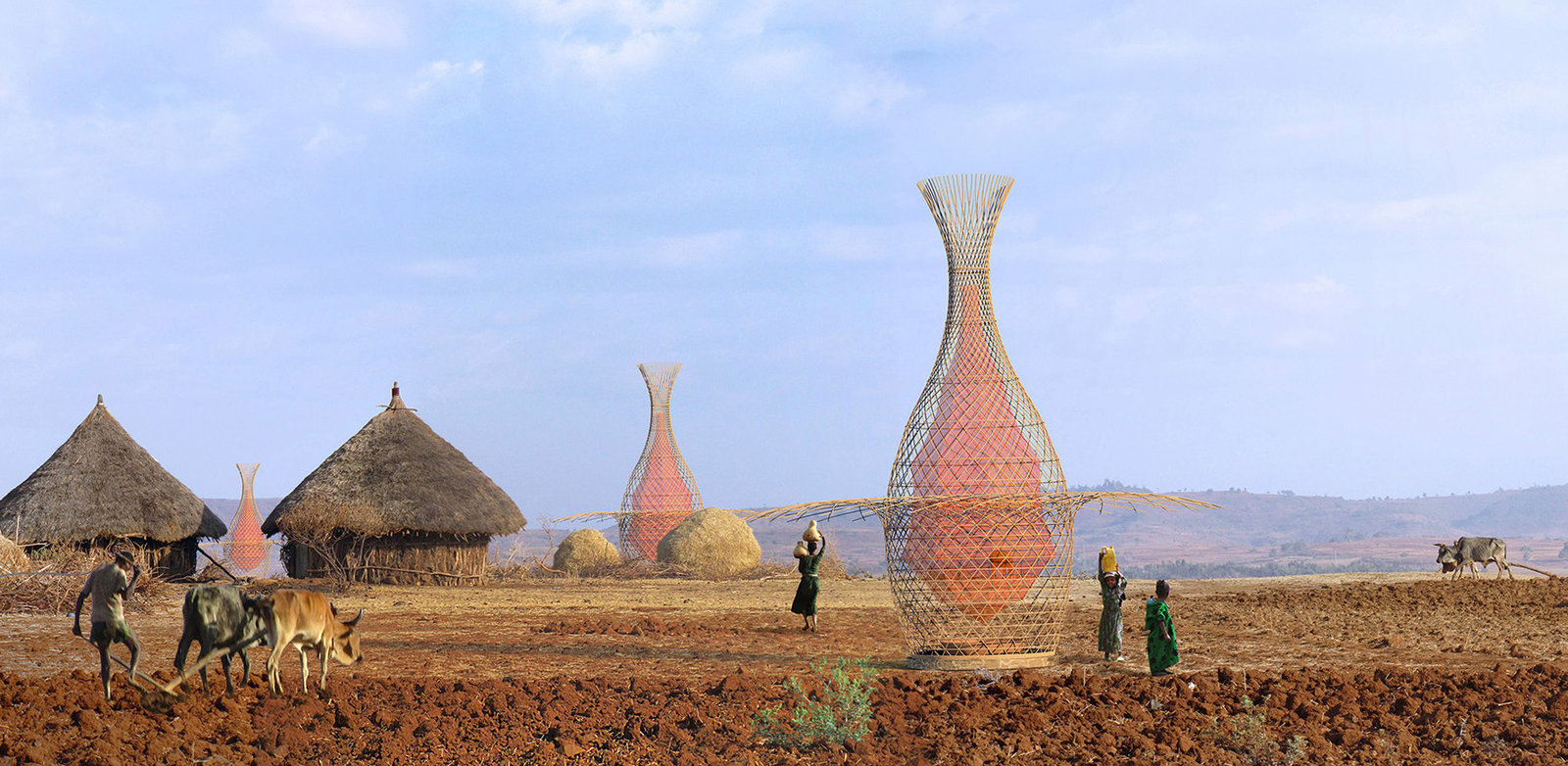When Italian designer Arturo Vittori and Swiss architect Andreas Vogler first visited Ethiopia in 2012, they were shocked to see women and children forced to walk miles for water. Only 34 percent of Ethiopians have access to a reliable water supply.
Some travel up to six hours a day to fetch some or, worse, resorts to using stagnant ponds contaminated by human waste, resulting in the spread of disease.Worldwide, a whopping 768 million people — two and a half times the U.S. population — don’t have access to safe drinking water. So just imagine if we could just pull water out of thin air? That’s what Vittori and Vogler asked once they saw the magnitude of problem and vowed to take action.
Their firm, Architecture and Vision, has since come up with WarkaWater, a majestic palm-like structure that may look like something you’d see in a modern art museum but it’s been designed to harvest water from the air. WarkaWater, which is named after an Ethiopian fig tree, is composed of a 30-foot bamboo frame containing a fog-harvesting nylon net that can be easily lowered for repairs and to allow communities to measure the water level.
Collecting water through condensation is hardly a new technique, but the creators of WarkaWater say their tree-inspired design is more effective, maximizing surface and optimizing every angle to produce up to 26 gallons of drinkable water a day — enough for a family of seven. Many Failed Attempts By Aid GroupsWestern organizations have been working to provide clean water access in Africa for decades, so WarkaWater joins a very long list of earlier attempts.
So far, high-tech solutions, like the once-promising Playpump (a hybrid merry-go-round water pump), have failed, mostly due to high costs and maintenance issues. This is where WarkaWater could stand apart — as a lower-tech solution that is easy to repair and far more affordable than digging wells in the rocky Ethiopian plateau. Each water tower costs $550 — a Playpump is $14,000 — and its creators say the price will drop significantly if they start mass-producing it.
The structure takes three days and six people to install and doesn’t call for any special machinery or scaffolding. “Once locals have the necessary know-how, they will be able to teach other villages and communities to build the WarkaWater towers,” says Vittori, who is already working on WarkaWater 2.0, an upgraded version that may include solar panels and LED bulbs to provide light after dark. The firm is in the process of raising funds to begin installing towers in Ethiopia next year.
And WarkaWater could also prove useful in other areas, like deserts, which have the critical feature for collecting condensation: a dramatic change in temperature between nightfall and daybreak. This elegant invention may not solve all of the world’s water woes, but it could improve accessibility one drop at a time.
Source: A Simple, Elegant Invention That Draws Water From Air : NPR





